
Hope for a huge, ancient and imperilled fish
First Nations are leading efforts to make sure lake sturgeon can find a home in...
As the world’s ecological crisis becomes better understood, the boreal forest is becoming somewhat of a celebrity because of one jaw-dropping stat: the Canadian boreal represents 25 per cent of the planet’s remaining intact forest, leading the world alongside the Amazon.
What’s more, around 80 per cent of Canada’s boreal is still relatively intact — a rare thing in today’s world.
But the boreal is facing threats from logging, mining, fires, pests and the many ways those factors interact with climate change.
“We have to recognize that this is one of the last great conservation opportunities in human evolution on Earth,” says Jeff Wells, science and policy director for the Boreal Songbird Initiative.
The boreal is one of our best hopes for mitigating the effects of climate change and keeping the Earth habitable. Yet it also houses huge deposits of oil and gas and minerals. The decisions being made to protect or exploit it could have repercussions for generations.
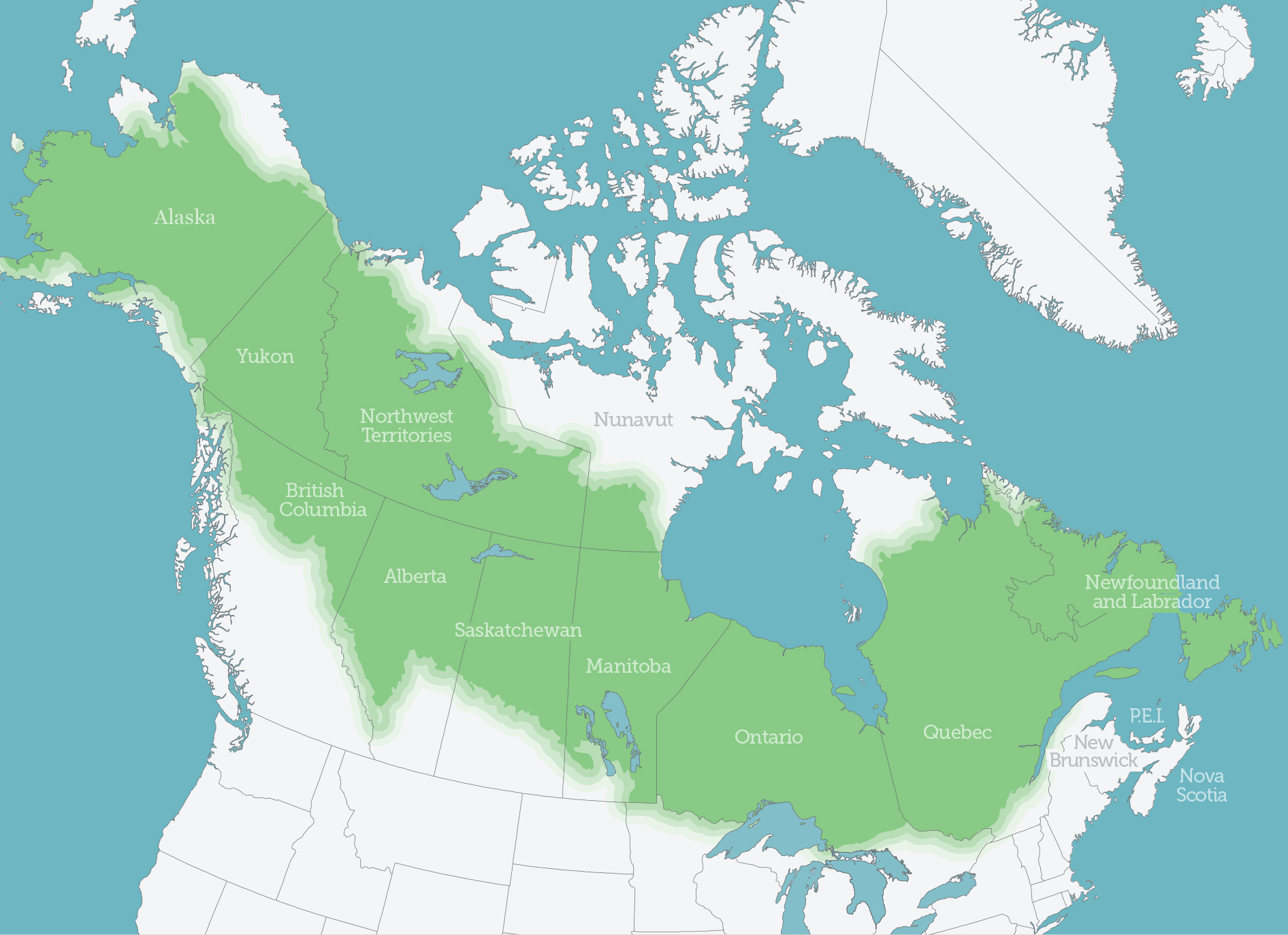
The boreal forest swoops across at least part of every province and territory except for PEI and Nova Scotia. Image: Boreal Songbird Initiative
The green ribbon that makes up 75 per cent of Canada’s forests (and about a quarter of the country’s total landmass) is vital habitat for many of Canada’s iconic and endangered species. Threatened boreal caribou depend on large unbroken swaths of it to protect the animals and their calves from predators, while endangered wolverines and whooping cranes make their homes there as well.
Not a monolithic forest but a patchwork, Canada’s 270 million hectares of boreal is made up of swamps, bogs, meadows, forests of different types — including hardwoods and conifers — and the rivers and lakes that tie them all together.
The effects of the forest reach out to the surrounding areas and the entire globe. Its wetlands filter water and treat waste; the birds that nest there migrate as far as the southern tip of South America, eating insects and spreading seeds along the way; its vast tracts of land act as refugia for wildlife species that have disappeared from the rest of their former ranges; and its undammed rivers bring nutrients to the sea, feeding the fish stocks that feed us.
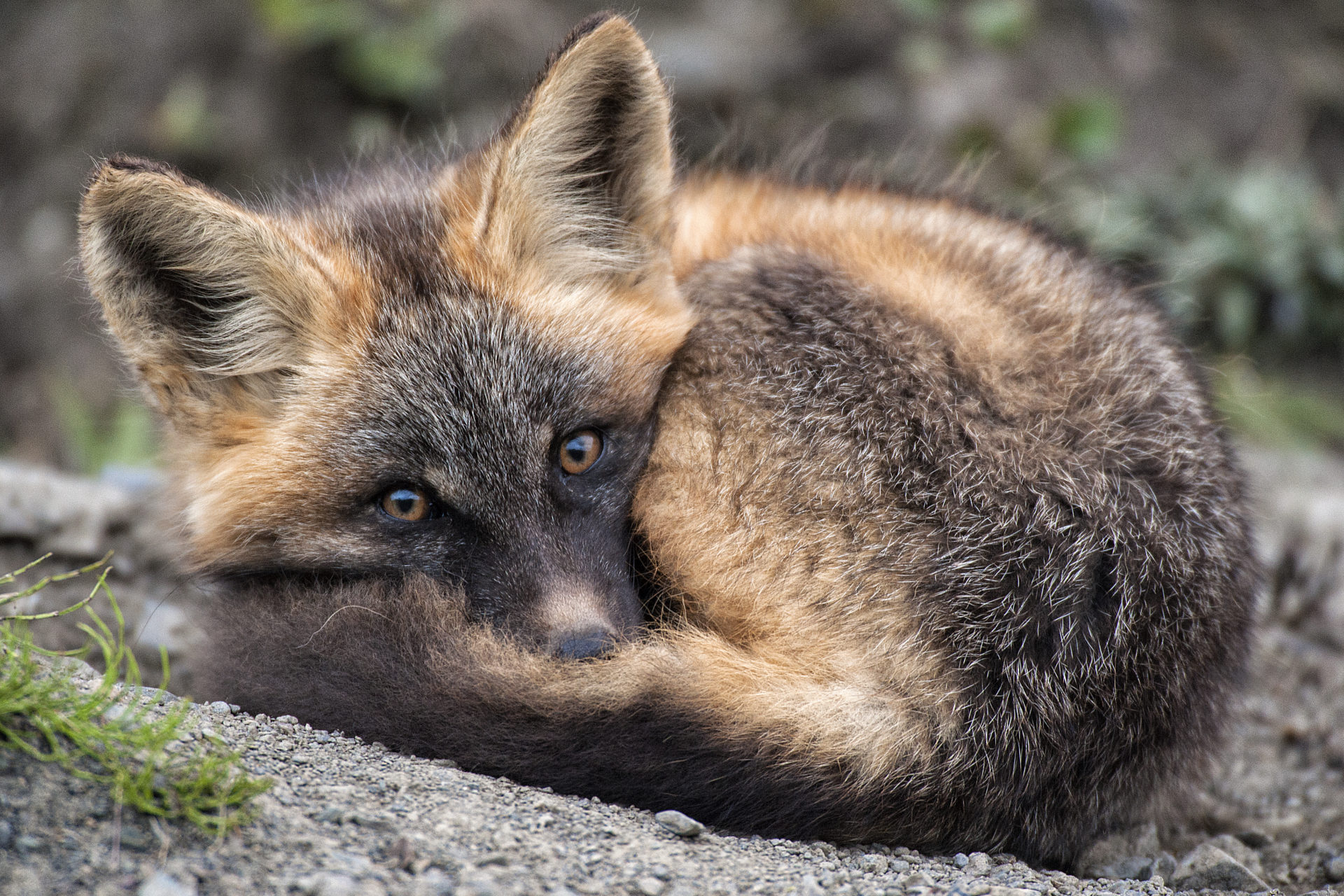
A red fox pup wakes from a nap near its den at the headwaters of the Peel Watershed. Photo: Peter Mather
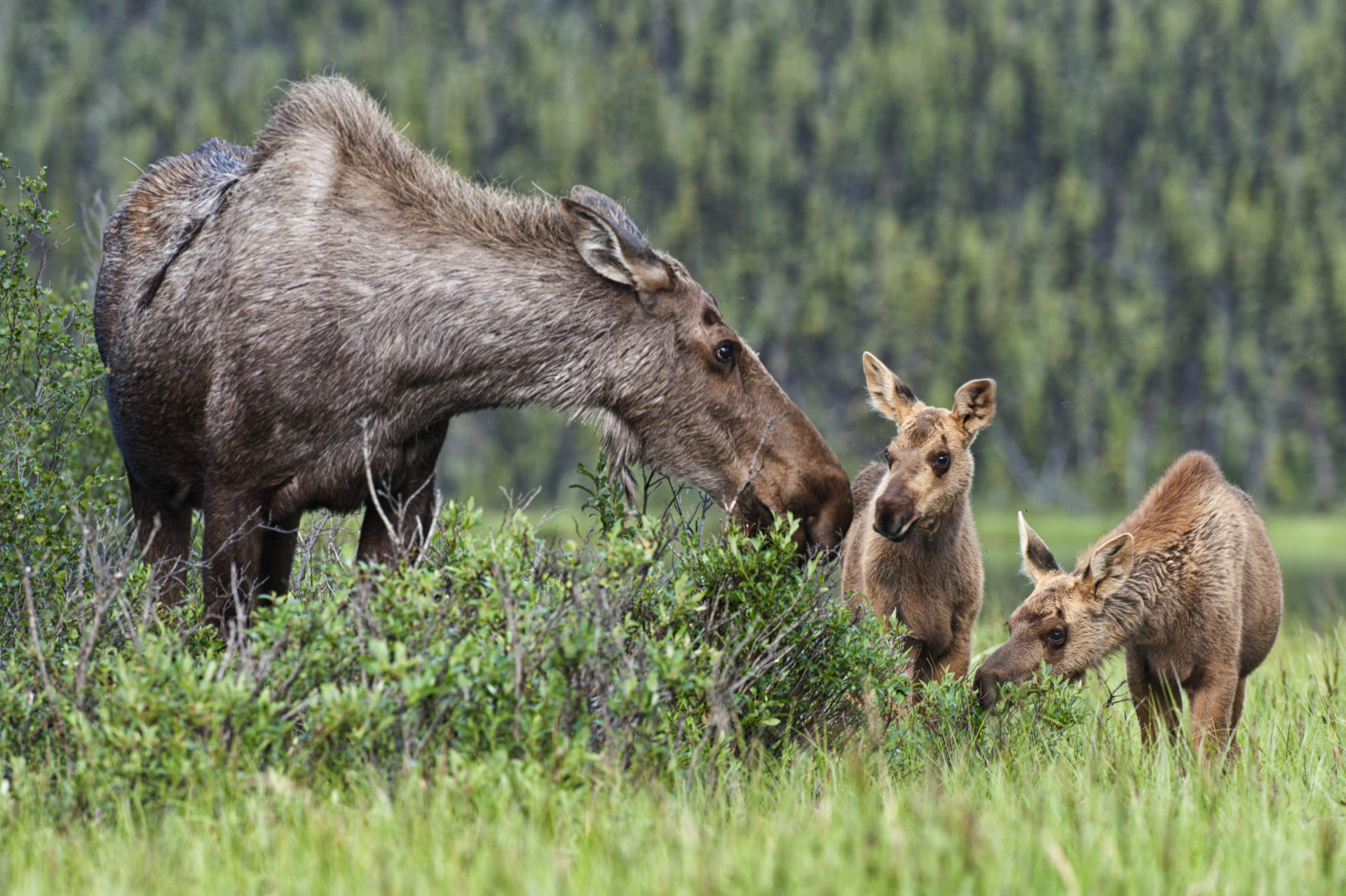
A moose cow and her calves near the Wind River, Yukon. Photo: Peter Mather
“It has sort of an unduly large influence on the whole globe — people, ecosystems, climate, everything,” Wells says.
Taken together, its “ecosystem services” (functions that benefit humans) have been estimated at $93 billion per year in value.
The boreal is also a globally significant carbon bank. The soils, wetlands and trees of the boreal soak up carbon — almost twice as much as what’s stored in tropical forests. When it remains undisturbed, it has a good chance of retaining that carbon, storing it long-term.
“Its role as a place where carbon is held in storage over thousands of years has meant it has a huge role in affecting the global climate,” Wells says.
But like any other bank, this carbon bank is subject to both withdrawals as well as deposits. While the boreal forest has sequestered a lot of carbon, it’s not locked in; the forest breathes carbon in cycles, absorbing it when it’s healthy and growing, and releasing it when it’s sick and dying.
“Whether Canada’s forests are a carbon source or a sink depends what’s happening in them,” explains Barry Cooke, a research scientist with the Canadian Forest Service.
“When you have a lot of dying trees, you end up emitting a lot of carbon.”
That can happen in a few different ways. The obvious one is burning: when a wildfire rages through a forest, it releases the carbon in the trees and top layers of the soil into the atmosphere. Those fires are happening more frequently, and they’re burning more intensely, as the forests and bogs dry out.
Logging presents a different problem for the forests. Logging operations affect older stands of trees more than fires do, meaning they tend to decrease the age of a forest — and younger trees contain less carbon. The trees that are logged also tend to be burned, ground into pulp or otherwise release their carbon sooner than if they were left alive.
A recent report from the Natural Resources Defense Council found Americans’ voracious need for toilet paper — averaging three rolls a week, according to the study — is ravaging Canada’s boreal forest.
“The companies with the largest market shares have the power to make a significant difference for the future of our world’s forests,” the authors wrote. “Instead, they largely adhere to decades-old tissue formulas that have taken a devastating toll on forests.”
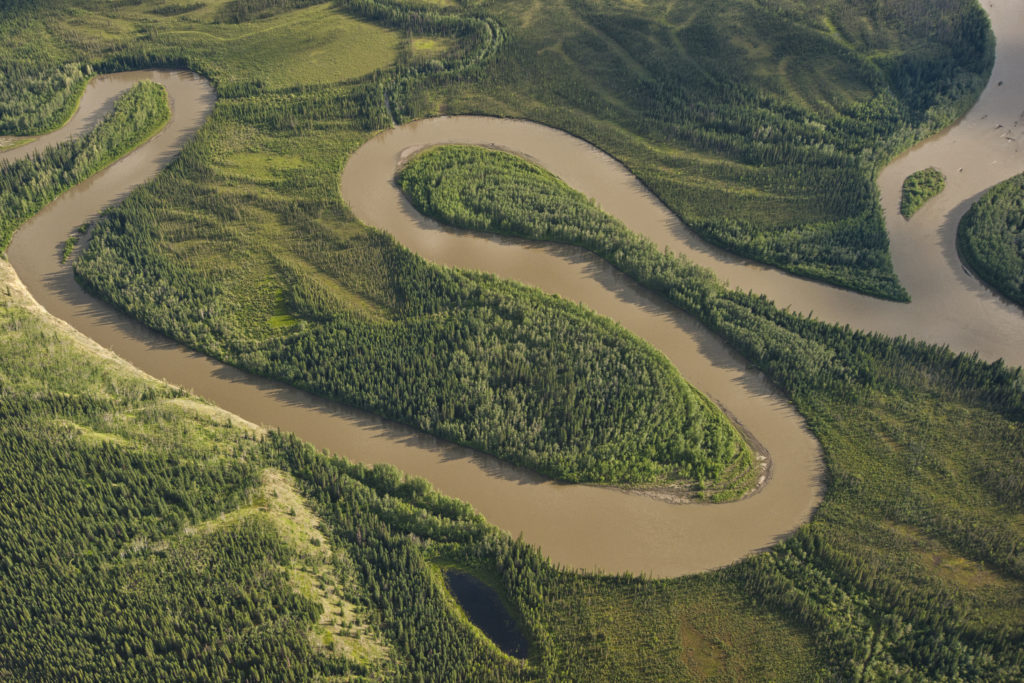
Aerial view of the Stewart River in Yukon. Photo: Peter Mather
According to data released by Natural Resources Canada, as a result of disturbance from logging, insects and fire, the forest has actually emitted between 20 and 237 megatonnes of carbon dioxide equivalent per year since 2013.
“We know that the more we impact the forest by changing it with various kinds of industrial activities, we may allow more of the carbon in the soil to be released,” Wells says. “The more industrial footprint we have on the landscape, the more we exacerbate the problem.”
Finally, they can be attacked by pests. Increasing numbers of native pests like the pine beetle that devastated B.C. are ravaging the boreal forests; spruce budworm, meanwhile, is ramping up for a repeat performance in eastern Canada.
Exotic pests like the emerald ash borer, hemlock wooly adelgid or brown spruce longhorn beetle are arriving and finding the climate and the drought-weakened trees more and more to their liking.
“Pests from China now do okay in Canada,”Cooke says. “They never did before. They survive, they thrive, they kill trees.”
What these trends all have in common is that they are caused or exacerbated by climate change. And in turn, they’re making climate change worse. A 2013 paper in the journal Environmental Reviews summed it up: It’s not just that the carbon stored in forests has the potential to accelerate climate change, but the inverse is true as well.
“The single biggest threat to [carbon] stocks is human-caused climate change.”
Climate change has been suggested — by unscrupulous politicians looking for attention, among others — as a potential net benefit to forests, with higher carbon dioxide concentrations nourishing plants. Indeed, forests have been expanding. But that’s not the whole story. It’s not even a big part of it, to be frank.
A recent study in the journal PLOS One credited the global “feel good factor” with the forests’ growth — not carbon. It showed that forests are expanding because people with rising incomes and living standards are more willing to invest in reforestation and less in need of destructive farming practices.
“Highly developed countries apply modern agricultural methods on good farmlands and abandon marginal lands, which become available for forest expansion,” the authors wrote.
Canada is no exception: between 1951 and 2011, the number of Canadians living in rural areas was cut in half. That urbanization has led to a regrowth of forests into former farmland.
So much for the nourishment theory. In fact, a study released in late 2018 found that trees are indeed growing faster — but as a result they’re dying younger. The trees are running out of water as the increased carbon stimulates their growth, so much so that they overshoot their ecosystems’ ability to support them. It also makes them more vulnerable to pests.
Some parts of the boreal, such as in eastern Canada, are also expected to have longer growing seasons and more rainfall. But others — those in the West in particular — are going to dry out. By 2100, mean annual temperatures in the boreal could be as much as four to five degrees Celsius higher. That will mean tree-killing droughts and wildfires.
What about the march of the trees northward into the tundra and up the sides of mountains? Can’t that make up for the losses down south? It’s true — the tundra is “greening.” But the plants expanding into the tundra are mostly shrubs, not the trees and bogs that make the boreal forest so important as a carbon sink.
In that same northern region, the permafrost underlying the forest is melting, which is not only releasing carbon of its own but also affecting the trees rooted above.
The news for the forest, in other words, is not good, according to the authors of a 2013 paper from the Canadian Forest Service.
“All aspects of boreal forest ecosystem function are likely to be affected.”
With these challenges to the boreal, it’s easy to focus on the negative. But there are things that can be done to slow the damage while carbon emissions are reduced and the overarching problem of climate change is slowed.
“If you’re on a ship that has a very small leak in it that’s very slowly sinking, you’d probably be looking at what you can do to slow the leak,” Wells says.
Protecting large swathes of the forest from development — be it mining, forestry, oilsands mines, large-scale hydropower dams or other disturbance — can keep the forest and its valuable ecosystem intact.
New Indigenous-led protected areas are helping to achieve that.
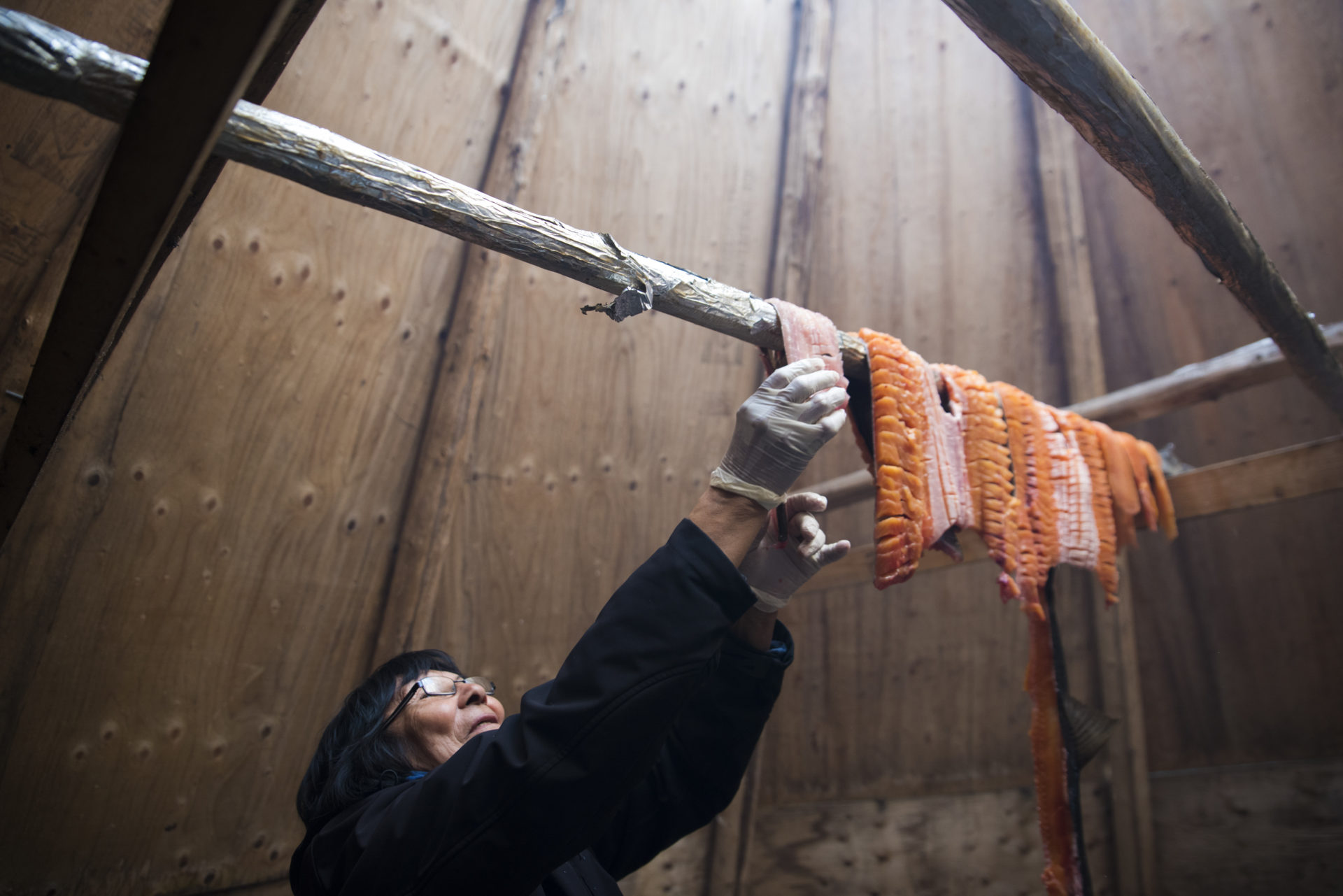
Dora Blondin hangs trout from Great Bear Lake in a tipi. The area near the lake and the community of Deline was recently named a UNESCO biosphere reserve, and the residents of the community are the stewards. Photo: Pat Kane
Pimachiowin Aki (“The Land That Gives Life”) was designated a UNESCO World Heritage site in July 2018. It encompasses nearly three million hectares, an area the size of Belgium, in the homeland of four Anishinaabe communities straddling Manitoba and Ontario. It’s the first UNESCO site of its kind: a “mixed” site that includes recognition of its cultural, as well as its natural, value.
In the Northwest Territories, an area almost half that size was protected in October. The 14,250 square-kilometre wildlife area in Edéhzhíe, N.W.T., will be co-managed by the Dehcho and the Government of Canada. Another area, on the eastern end of Great Slave Lake, Thaidene Nene, is in the consultation phase. It would be co-managed by Indigenous governments and organizations, Parks Canada and the Government of the Northwest Territories.
“The solutions to so much of this are going to be in the hands of the Indigenous people of the boreal,” Wells says.
—
Editor’s note: The Boreal Songbird Initiative, of which source Jeff Wells is an employee, is a financial supporter of The Narwhal in 2019. As with all of our financial supporters, the organization had no editorial control over this story.
Get the inside scoop on The Narwhal’s environment and climate reporting by signing up for our free newsletter. A $335 million funding commitment to fund...
Continue reading
First Nations are leading efforts to make sure lake sturgeon can find a home in...

We’re excited to share that an investigation by The Narwhal is a finalist for the...

A new documentary, Nechako: It Will Be a Big River Again, dives into how two...
